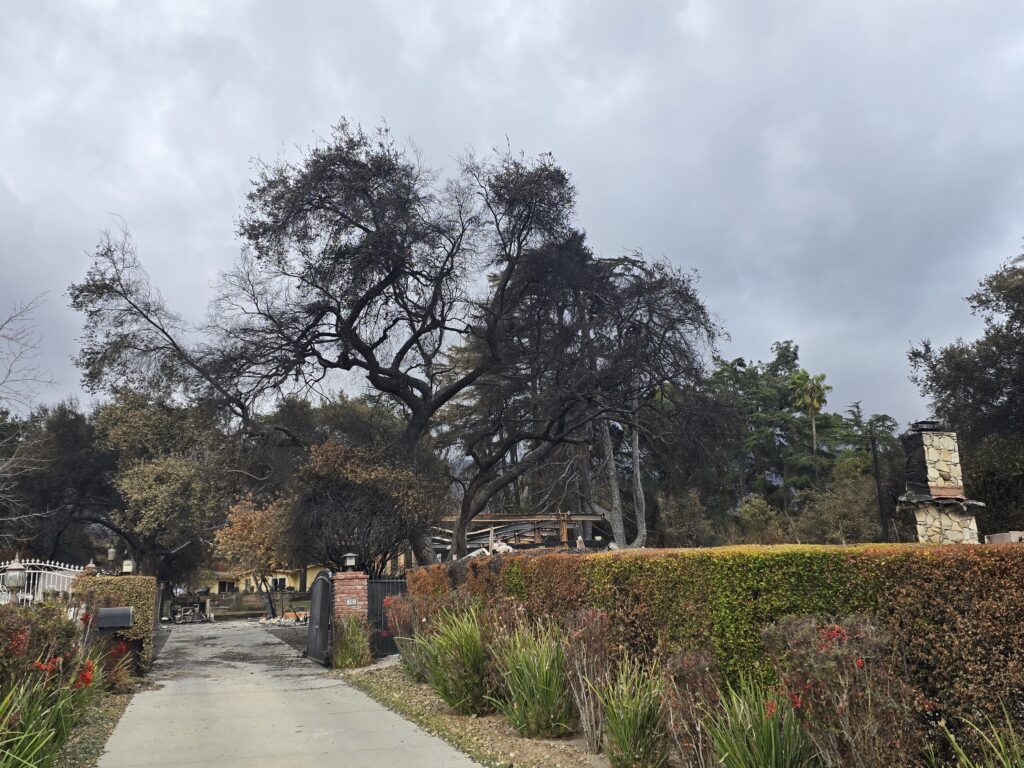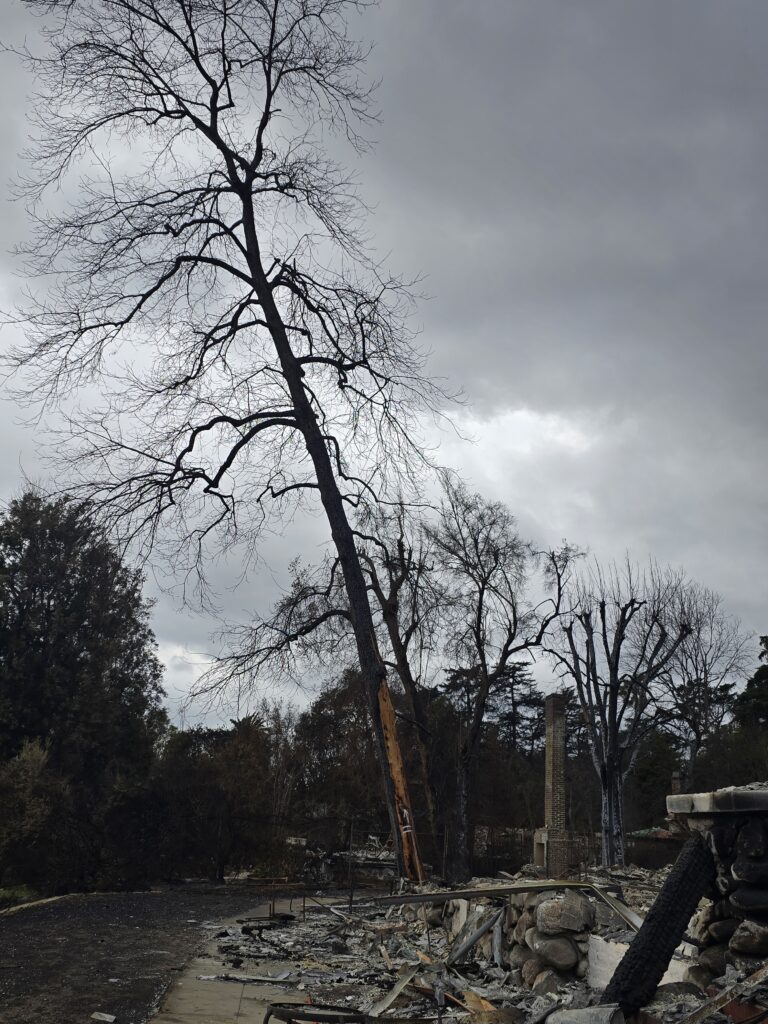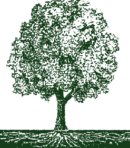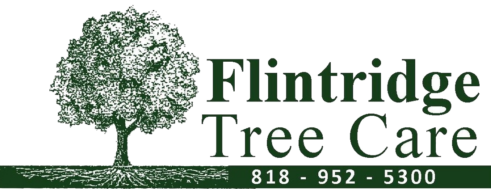Our Altadena neighbors: we are here to help!
Call: (818) 952-5300
Text:(818)-796-3085
What do you do with your landscaping and trees after a fire?
After a fire, assessing and restoring your landscaping—especially trees and hedges—requires careful evaluation. Here’s how to determine what might survive and how to handle the recovery process:

This large Oak can be saved if taken care of properly!
Assessing Trees After a Fire
- Bark & Cambium Test
- If the bark is scorched but intact, the tree may survive.
- Use a knife to scrape a small section of bark—if the cambium (just beneath the bark) is green and moist, the tree is still alive. If it’s dry or brown, the tree is likely dead.
- Leaf & Bud Growth
- Deciduous trees: If they begin sprouting new leaves in spring, they have a chance.
- Evergreens: If needles are completely brown or fall off easily, the tree is likely dead.
- Trunk & Root Damage
- Deep charring or cracks in the trunk suggest irreversible damage.
- If roots are burned underground, the tree may not be stable, even if it shows signs of life.
- Branch Flexibility
- Bend a branch—if it snaps easily and is dry inside, it’s likely dead. If it’s flexible, there’s a chance for survival.
- Soot and Smoke Damage
- Heavy soot or lingering smoke smell in the bark could indicate deeper tissue damage.

This tree cannot be saved: The cambium layer is dry and burnt and has root failure
Determining What Landscaping to Keep
- Hedges and Shrubs: If the roots are intact and there’s some green growth at the base, they may recover. Cut back damaged sections and wait for regrowth.
- Perennials & Ground Covers: Many will regrow from underground parts, even if scorched above. Water and monitor for new shoots.
- Larger Trees: If they provide shade, habitat, or a property boundary, they are worth saving if structurally sound. Consult an arborist for high-value trees.
Clearing & Restoration Tips
- Protect Root Zones: If heavy equipment is needed, mark and protect trees and hedges you want to keep with fencing or barriers.
- Remove Hazardous Trees: Dead or structurally weakened trees should be removed to prevent future damage.
- Soil Recovery: Fire can alter soil chemistry—test the soil and amend it with organic matter, mulch, or biochar.
- Erosion Control: Use mulch, logs, or temporary plant cover to prevent soil loss.

